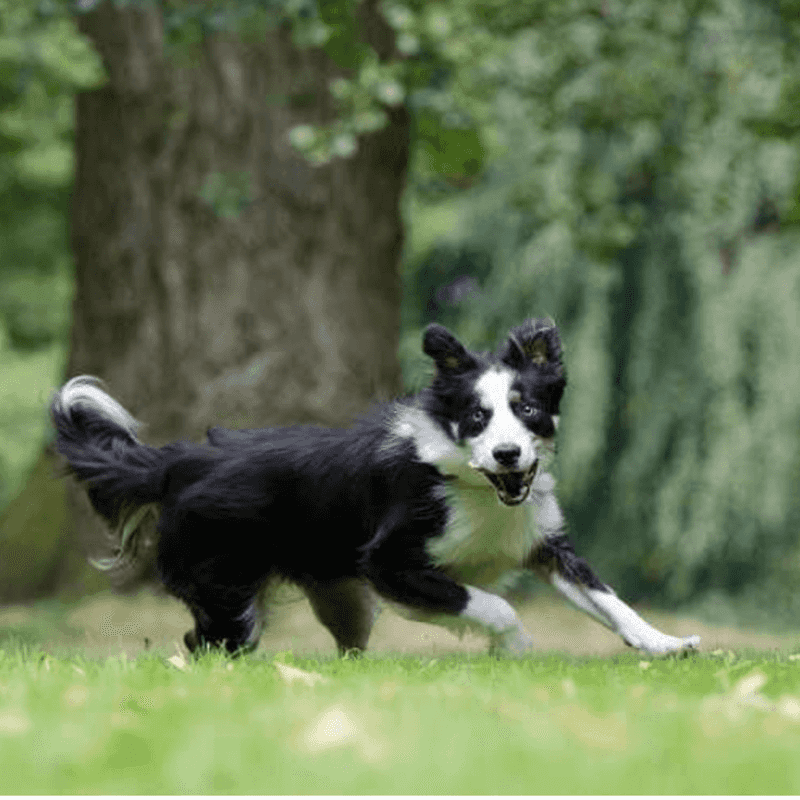Just like humans, dogs can suffer from a variety of mental health issues. These issues can significantly affect their overall well-being and behavior. Understanding these mental health challenges can help caregivers provide better care and support.
Noise Phobia
Loud noises like thunderstorms or fireworks can terrify some dogs. Noise phobia is one of the most common anxiety disorders in dogs. A normally courageous canine may tremble, hide, or even try to escape when they hear a loud sound.
For some, even the sound of a door slamming can trigger panic. To help, create a safe space where they feel secure. Some owners play calming music or use noise-cancelling devices.
Training and behavioral therapies might also reduce fear over time, offering relief to these sensitive souls.
Compulsive Behaviors
Some dogs develop compulsive behaviors, similar to obsessive-compulsive disorder in humans. This might be seen as tail chasing, excessive licking, or snapping at invisible flies.
These behaviors often indicate stress or boredom and can lead to physical injury. Identifying and addressing the underlying causes is crucial. Providing mental stimulation, like puzzle toys, can alleviate some compulsions.
Professional help may be required in severe cases. Always observe changes in behavior, as they are communication signals from your furry friend.
Depression
Dogs may experience depression, displaying symptoms similar to humans. A normally playful dog might become withdrawn, lose interest in activities, or exhibit changes in eating and sleeping habits.
Changes in the household, such as the loss of a companion, can trigger this emotional downturn. Regular exercise, play, and companionship often help.
Consulting a veterinarian for advice and possible treatments is also recommended. Remember, your dog’s emotional health is as important as their physical well-being.
Separation Anxiety
Dogs are highly social animals, often forming deep bonds with their human companions. When left alone, some may experience separation anxiety. This condition manifests through behaviors like excessive barking, destructive chewing, or urinating indoors.
Imagine a dog that feels abandoned every time its owner leaves the house. This overwhelming anxiety can be distressing for both the dog and the owner. Caregivers should gradually accustom their pets to being alone.
Providing comfort items, like a favorite toy or an item of clothing with the owner’s scent, can help alleviate their stress.
Cognitive Dysfunction
As dogs age, some may experience cognitive dysfunction, akin to Alzheimer’s in humans. Signs include disorientation, disrupted sleep patterns, and changes in social interactions.
Imagine a once-alert dog now struggling to find its way home. This cognitive decline can be heartbreaking but manageable with proper care.
Special diets, mental exercises, and medications might slow the progression, improving the quality of life for an aging companion.
Post-Traumatic Stress Disorder (PTSD)
Similar to humans, dogs can suffer from PTSD following traumatic experiences such as abuse, accidents, or natural disasters. Symptoms include hyper-vigilance, aggression, and avoidance of certain triggers.
A once-friendly dog might shy away from strangers after a traumatic encounter. Patience, positive reinforcement, and professional training can aid recovery.
Understanding and empathy are key in helping these dogs overcome their fears and regain their confidence.
Social Anxiety
Some dogs experience social anxiety, feeling uneasy around unfamiliar dogs or people. This can result in shy, withdrawn, or even aggressive behaviors.
Imagine a dog that prefers solitude to social gatherings. Gradual exposure to new situations combined with positive reinforcement can build confidence.
Training classes and socialization efforts are beneficial in overcoming this anxiety, helping your dog enjoy social interactions.
Stereotypic Movement Disorder
Stereotypic movement disorder involves repetitive actions like pacing, which can be distressing for both the dog and owner. These movements often stem from boredom, lack of exercise, or confinement.
A dog that paces might be trying to cope with stress. Engaging activities and a stimulating environment can reduce these behaviors.
Consulting a professional for a tailored approach can be effective in managing and reducing these tendencies.
Phobias
Dogs can develop irrational fears or phobias of specific objects, people, or situations. These phobias can lead to extreme reactions such as hiding or aggression.
Consider a dog that trembles at the sight of a vacuum cleaner. Gradual desensitization and positive reinforcement can mitigate these fears.
Helping a dog overcome phobias requires patience and understanding, but the results can lead to a happier, more relaxed pet.









